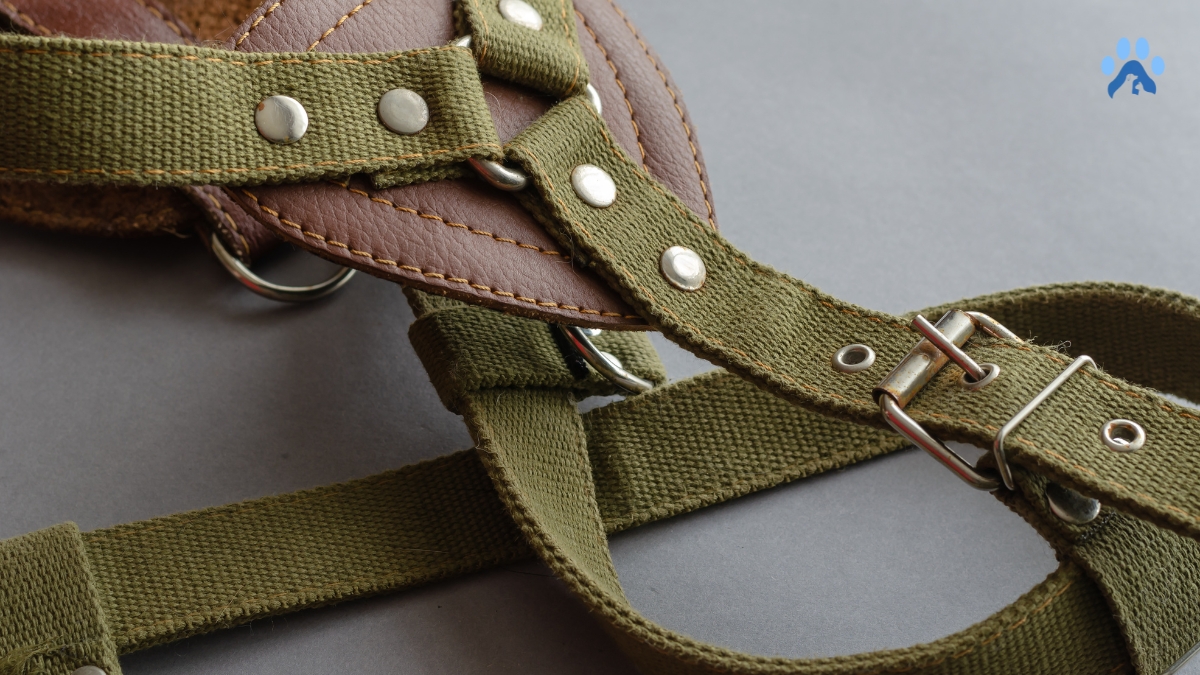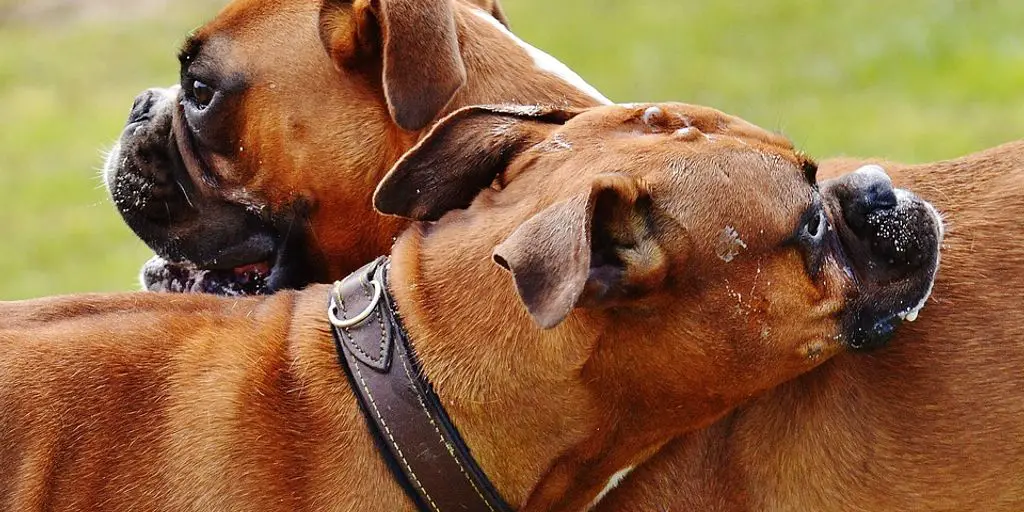Choosing the right dog harness can be a daunting task, especially for first-time dog owners. With so many types, styles, and sizes available on the market, it can be overwhelming to determine which one is best suited for your furry friend. However, choosing the right harness is crucial for your dog’s comfort, safety, and overall well-being.
When choosing a dog harness, it’s essential to consider the purpose of the harness. For example, if you plan on taking your dog for long walks or hikes, a sturdy and comfortable harness with good padding and support is necessary. On the other hand, if your dog is a puller or has neck problems, a no-pull harness or a head halter may be a better option. It’s also important to consider your dog’s size and breed, as different harnesses are designed for different types of dogs.
To help you choose the right dog harness, we’ve compiled a list of tips and factors to consider. From determining the right size and fit to choosing between different harness types, we’ll guide you through the process of selecting the perfect harness for your furry companion. With our expert advice and guidance, you’ll be able to find a harness that not only looks good but also keeps your dog safe, comfortable, and happy.
Why Choose a Dog Harness
Dog harnesses are becoming increasingly popular among pet owners and for good reason. Harnesses offer several benefits over traditional collars, such as better control, reduced risk of injury, and improved comfort for your furry friend. In this section, we will explore the reasons why you should consider using a dog harness.
Better Control
One of the main advantages of using a dog harness is the improved control it offers. Unlike collars, which only wrap around the neck, harnesses distribute pressure across the chest and back, making it easier to control your dog’s movements. This is especially useful for dogs that tend to pull or are easily distracted during walks.
Reduced Risk of Injury
Collars can be dangerous for dogs, especially if they tend to pull or are prone to slipping out of them. A harness provides a more secure fit, reducing the risk of your dog slipping out and running into traffic or getting lost. Additionally, collars can cause damage to the neck and throat, leading to injuries and discomfort. A harness eliminates this risk by distributing pressure across the chest and back, reducing the risk of choking and painful injuries.
Improved Comfort
Dog harnesses are designed with your pet’s comfort in mind. They are made from soft, breathable materials that reduce the risk of discomfort and irritation. Additionally, harnesses are adjustable, ensuring a perfect fit for your dog’s size and shape. This is especially important for dogs that are prone to skin irritation or have sensitive skin.
Walking and Training
A dog harness is an excellent tool for walking and training your pet. Harnesses provide better control and reduce the risk of injury, making it easier to train your dog to walk on a leash. Additionally, harnesses can be used to teach your dog new commands or to correct bad behavior, such as pulling or jumping.
Veterinarian Recommended
Many veterinarians recommend using a dog harness over a collar. Harnesses are safer and more comfortable for your pet, reducing the risk of injuries and discomfort. Additionally, harnesses are recommended for dogs that have neck or throat issues, such as tracheal collapse or respiratory problems.
In conclusion, a dog harness is a safer, more comfortable alternative to traditional collars. They offer better control, reduce the risk of injury, and are recommended by veterinarians. When choosing a harness, be sure to select the right size and style for your dog’s needs. With the right harness, you and your furry friend can enjoy safe, comfortable walks together.
Types of Dog Harness
When it comes to choosing a dog harness, there are several types available in the market. Each type has its unique features and benefits. Let’s take a look at some of the most popular types of dog harnesses.
Body Harnesses
Body harnesses wrap around the dog’s chest and back and provide a comfortable and secure fit. They are ideal for dogs that pull on the leash as they distribute the pressure evenly across the dog’s chest and shoulders. Body harnesses come in various sizes, designs, and materials, including leather, nylon, and padded options.
No-Pull Harness
No-pull harnesses are designed to prevent dogs from pulling on the leash. They work by applying pressure to the dog’s chest when they try to pull, which discourages them from doing so. No-pull harnesses come in various styles, including front-clip and back-clip options, and are suitable for dogs that pull excessively.
Front Clip Harness
Front clip harnesses have a leash attachment point on the front of the harness, which helps to discourage pulling. They work by redirecting the dog’s attention toward the owner and away from distractions. Front clip harnesses are ideal for dogs that pull on leashes and are available in various sizes, designs, and materials.
Mobility Harness
Mobility harnesses are designed to provide support and assistance to dogs with mobility issues. They come with a handle that allows owners to lift and support their dogs when needed. Mobility harnesses are ideal for senior dogs, dogs recovering from surgery, or those with disabilities.
In conclusion, choosing the right harness for your dog is crucial for their comfort, safety, and well-being. Consider the size, breed, and activity level of your dog when selecting a harness. Always ensure that the harness fits properly and is comfortable for your dog to wear. Additionally, look for features such as reflective material and adjustable straps to ensure maximum safety and comfort during walks and exercise.
Choosing the Right Size
When choosing a dog harness, the right size is crucial for your dog’s comfort and safety. A harness that is too small can cause discomfort and restrict your dog’s movements, while a harness that is too big can slip off or allow your dog to escape.
To determine the right size harness for your dog, you will need a measuring tape. Measure your dog’s girth, which is the widest part of their chest, just behind their front legs. This measurement will help you choose the correct size harness.
Different harnesses may have different sizing charts, so it’s important to refer to the packaging or the manufacturer’s website to ensure you are choosing the correct size. For example, PetSmart provides a dog harness sizing chart that lists the recommended harness size based on your dog’s weight and girth measurements.
It’s also important to consider your dog’s breed and body shape when choosing a harness. Some breeds may require a specific type of harness, such as a no-pull harness for dogs that tend to pull on their leash. Additionally, some harnesses may be designed for dogs with a certain body shape, such as a wider chest or a longer body.
When trying on a harness, make sure it fits snugly but not too tight. You should be able to fit two fingers between the harness and your dog’s body. It’s also important to check the harness regularly to ensure it still fits properly and is not causing any discomfort or irritation.
Overall, choosing the right size harness for your dog is crucial for their comfort and safety during walks and other activities. By measuring your dog’s girth and considering its breed and body shape, you can ensure you are choosing the correct size harness for your furry friend.
Ensuring Comfort and Safety
Choosing the right dog harness is crucial to ensure your dog’s comfort and safety while walking. A poorly fitted harness can cause irritation or chafing, making walks uncomfortable for your furry friend. Here are some tips to ensure your dog’s comfort and safety while walking with a harness.
Proper Fit
A well-fitted harness is essential for your dog’s comfort. When choosing a harness, measure your dog’s ribcage to ensure you get the right size. A harness that is too tight can be painful, while a harness that is too loose can allow your dog to wiggle out of it. Check the packaging to make sure you’re choosing the proper size.
Comfortable Material
The material of the harness is also important to ensure your dog’s comfort. Look for a harness that is made of soft, breathable material that won’t irritate your dog’s skin. Avoid harnesses that are made of rough or scratchy materials that can cause discomfort.
Walking Control
A harness that allows you to control your dog’s movement while walking is important for both your dog’s safety and your peace of mind. A back clip harness is a good option for dogs that tend to pull while walking. This type of harness allows you to control your dog’s movement by attaching the leash to the back of the harness, which discourages pulling.
Irritation Prevention
To prevent irritation or chafing, make sure the harness is properly adjusted and doesn’t rub against your dog’s skin. You can test the harness by having your dog walk around your home with it on to ensure it isn’t moving around on their body, loosening, or rubbing uncomfortably.
In summary, choosing the right dog harness is crucial to ensure your dog’s comfort and safety while walking. A properly fitted harness made of soft, breathable material that allows you to control your dog’s movement is important. Prevent irritation or chafing by ensuring the harness is properly adjusted and doesn’t rub against your dog’s skin.
Additional Considerations
When choosing a dog harness, there are a few additional considerations to keep in mind. These include the age of your dog, the number of dogs you have, and the cost of the harness.
For Senior Dogs
For senior dogs, it’s important to choose a harness that has padding to protect their joints and muscles. Look for a harness that is adjustable and has a flat-buckle collar to prevent any injuries. A front-hook harness can also be a good option for senior dogs, as it can help to reduce pulling and minimize the risk of injury.
For Multiple Dogs
If you have multiple dogs, it’s important to choose a harness that is easy to adjust and connect. Look for a harness that has multiple connection points, so you can easily connect each dog to the same leash. A front-hook harness can also be a good option for multiple dogs, as it can help to reduce pulling and make it easier to control each dog.
Cost
When choosing a dog harness, the cost is an important consideration. While it’s important to choose a harness that is high-quality and durable, you don’t want to overspend. Look for a harness that is reasonably priced and offers good value for money. You can find a wide range of harnesses at your local pet store or online.
When shopping for a dog harness, it’s important to keep in mind the specific needs of your dog. Consider their age, size, and level of activity, as well as any injuries or health conditions they may have. By taking the time to choose the right harness, you can ensure that your dog is comfortable, safe, and happy on walks.
Frequently Asked Questions
What size dog harness do I need?
Choosing the right size harness is crucial for your dog’s comfort and safety. To find the right size, measure your dog’s chest girth with a soft tape measure. Make sure to measure the widest part of the chest, just behind the front legs. Compare your dog’s measurements to the sizing chart provided by the manufacturer of the harness you are interested in.
What are the best dog harness brands?
There are many great dog harness brands available, each with its unique features and benefits. Some of the most popular brands include PetSafe, Ruffwear, Kurgo, and Julius-K9. When choosing a brand, consider the quality, durability, and comfort of the harness.
How do I measure my dog for a harness?
To measure your dog for a harness, you need to measure the chest girth, the neck girth, and the length of your dog’s back. Use a soft tape measure and measure around the widest part of the chest, just behind the front legs, for the chest girth. For the neck girth, measure around the base of the neck. For the length, measure from the base of the neck to the base of the tail.
What is the difference between a front and back harness?
A front harness has a leash attachment on the front of the harness, while a back harness has a leash attachment on the back. A front harness is ideal for dogs that pull on the leash, as it gives you more control over their movement. On the other hand, a back harness is more comfortable for dogs that don’t pull and can be used for everyday walking.
Are harnesses better than collars for walking dogs?
Harnesses are generally considered safer and more comfortable for dogs than collars. Collars can put pressure on a dog’s neck, which can lead to health issues over time. Harnesses distribute the pressure more evenly across the dog’s body, reducing the risk of injury.
What features should I look for in a dog harness?
When choosing a dog harness, consider the material, padding, and adjustability. Look for a harness that is made of high-quality, durable material that can withstand wear and tear. A padded harness will be more comfortable for your dog, especially if they pull on the leash. An adjustable harness will allow you to get the perfect fit for your dog, ensuring their comfort and safety.



